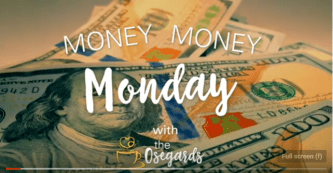Baby Step 3 to financial peace

When we talk about the finance class we lead, we often hear from people that they assume that it’s for people that are struggling with debt. In actuality, ditching non-mortgage debt is only 1 out of the 9 steps that is taught. The reason we market so heavily to people in debt is that roughly 80% of Americans are in debt. We are meeting people where they are at.

We do encourage you to get out of debt QUICKLY. As Dave Ramsey says, “Your most powerful wealth building tool is your income.” When your income is going to making payments, it’s not building wealth!
When the payments are gone
However, once your debts are gone, it’s time to fund other things. Baby Step 3 is creating a fully funded emergency fund.
It’s no shock to anyone that emergencies happen. The car breaks down unexpectedly, your spouse gets injured and can’t work for a few weeks or months, the list goes on and on.

The recommended amount for this emergency fund is 3 to 6 months of expenses. To know this number, you’ll have to be budgeting. When you know where your money goes each month and how much you need to get by each month, you can take that number times 3-6. Wondering where in that range to save? Check out our Money Monday segment on just that topic!
Why is three months of expenses the minimum recommended amount? In the event that you or your partner is injured and can’t perform their job, most disability insurance takes three months to kick in. Having 3 months of expenses will keep you going until the disability kicks in.
On the flip side, let’s say you were to lose your job or have another unexpected VERY major emergency expense. 6 months is typically plenty of time to either find a new job or find a way to drastically reduce your expenses.
Where does an emergency fund live?
There are two important things to note about your emergency fund.
- It needs to be easily accessible. This is not an investment. We’re not looking to make 12% returns on this money, so it’s really quite boring. It’s a safety net. You’ll need to be able to get to it super easily in case of an emergency, but not TOO easily. The emergency fund should not live in your normal checking account, or anywhere else that it could be easily spent on non-emergencies. Which leads us to number two…
- Define what an emergency is. An emergency is probably not the semi-annual sale at your favorite store or needing a new boat. Sit down with your partner and determine together what constitutes an emergency.
Baby Step 3 – boring but important
Of all of the baby steps, this one is arguably the most boring. By this point, we already HAVE an emergency fund (of $1000) and are out of debt. It may be tempting to just skip past this one and get to the “fun stuff”. But this step in the process is crucial for a couple of reasons.

First, it takes commitment to get out of debt and live on a budget. It takes just as much commitment to save up this much in cash and NOT touch it. Ever. Unless it’s an agreed-upon emergency.
Second, think of this like an insurance policy for yourself. This pile of money stands between you and never going into debt again. With the fully-funded emergency fund in place, you are prepared for anything. A job loss, a disability, a flood or fire, or anything else. This is your buffer to ensure that you have the time and resources to keep from relying on other people’s money to save you. Plus, Dave also calls the emergency fund Murphy-repellent. “What can go wrong will go wrong,” seems to find people who are unprepared.
What kinds of emergencies have you run into before? A car breaking down, broken windows on the house, or a water heater going out in the middle of winter? What would it be like to have cash ready to cover these expenses at a moments notice?
